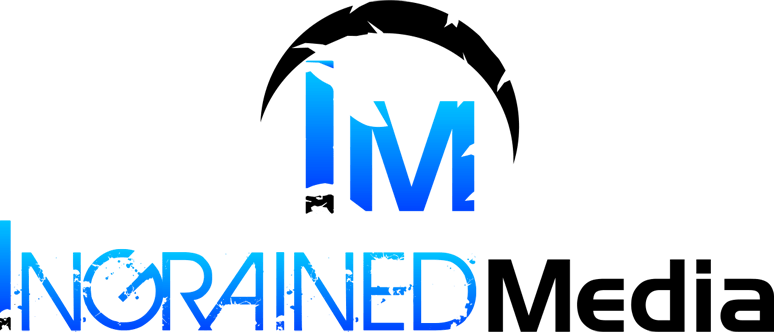Social Media Management: Your Strategy for Success in 2024
Navigating the ever-changing landscape of social media management requires more than frequent posts; it demands a symphony of strategy, content curation, and analytics.
At Ingrained Media we provide our clients a roadmap as we are masters of each facet, empowering you to elevate your brand’s digital presence effectively.
Key Features
Social media management goes beyond posting content; it involves strategic content creation, audience engagement, influencer collaboration, performance tracking, and ROI analysis, with social media managers acting as the ‘captains’ of these initiatives.
A clear social media strategy is rooted in SMART objective formulation and in-depth understanding of the target audience to guide content creation and platform selection, which should consider both major and niche platforms for optimal reach.
Advanced tools streamline social media tasks such as scheduling, publishing, analytics, and reporting, while targeted ad campaigns and in-depth engagement practices including leveraging user-generated content and social listening are key for brand growth and community building.
Understanding the Scope of Social Media Management
- The creation and distribution of content across various platforms
- Monitoring online discussions
- Collaborating with influencers
- Tracking and reporting on social media performance and return on investment
- content creation
- collaboration
- planning
- scheduling
- sharing
- analysis

- Essential Components of Social Media Management
- The Role of Social Media Marketing in Business
In contemporary business strategies, social media marketing holds a central role. Diverse social media channels provide unique benefits that can be customized to fulfill distinct marketing objectives. Some examples include:
Facebook, which is instrumental for lead generation and audience expansion
Instagram, which allows brands to share visually engaging content
YouTube, being the second most visited website, holds significance for video content marketing.
Nevertheless, the efficacy of social media marketing extends beyond merely selecting the right platforms; it includes comprehending and addressing the daily needs of followers. By delivering exceptional, authentic content that resonates with your audience’s desires and requirements, you can cultivate a dedicated fan base on social media.
Moreover, the incorporation of social selling and AI technology, such as chatbots, can expand customer care approaches and result in faster response times, ultimately boosting audience engagement and enhancing brand reputation.
Working Together To Craft Your Social Media Strategy

Just as a ship requires a clear destination and a map for its journey, clear objectives and a well-defined target audience are prerequisites for a successful social media strategy. Establishing clear objectives in a social media strategy is like setting the destination for your ship. It directs your marketing efforts and maintains uniformity across various platforms. Our team is here to help you with every step of the process.
First we must identify who are you sailing for? Identifying your target audience is like understanding who your passengers are. It involves conducting research to understand their demographics, interests, and behaviors, which in turn informs the creation of tailored content.
- Setting Clear Objectives
- Identifying Your Target Audience
Selecting the Right Social Media Platforms
- Identify the platforms used by your closest competitors
- Assess the performance of those channels for similar businesses
- Influence your own decisions regarding platform adoption.

- Major Social Media Platform Profiles
- Niche Platforms and Emerging Networks
- TikTok
Streamlining with Social Media Management Tools

- Hootsuite
- Buffer
- Sprout Social
- CoSchedule
- Later
- Scheduling and Publishing
- Analytics and Reporting
- suggest
- curate
- edit
- approve content for distribution.
Building and Managing Social Media Content
Content reigns supreme in the world of social media. It’s like the cargo that your ship carries. To attract and retain your audience, you need to master the art of creating and managing compelling social media content. This involves mastering visual content creation and engaging copywriting techniques.
Implementing an optimized content workflow is crucial for effective management of social media content creation. This ensures timely production and distribution of tailored content across various social media channels. But how do you make sure that your content is engaging and appealing to your social media audience personas please?

- Visual Content Mastery
- Engaging Copywriting Techniques
Visual content is like the sails on your ship. It’s what catches the eye and draws people in. Creating eye-catching images, videos, and graphics is crucial for engaging your audience on multiple social media accounts.
In order to master visual content creation, close collaboration with your design team and establishing a distinctive visual style that mirrors your brand’s identity is vital. It’s about crafting a cohesive aesthetic that connects with your audience and reinforces your brand’s visual identity across various social media platforms.
- Using persuasive language
- Creating a sense of urgency
- Highlighting the benefits of your product or service
- Using storytelling to connect with your audience
- Incorporating social proof
- Making your CTA clear and easy to follow
Enhancing Engagement with Social Media Ads

In the expansive sea of social media, ads serve as lighthouses guiding your audience to your brand. They play a crucial role in building an authentic following, driving user interaction, and ultimately, achieving higher sales and revenue.
Creating effective ads involves more than merely broadcasting your message. It’s about crafting targeted ad campaigns that resonate with your audience and measuring their success to optimize future efforts.
- Crafting Targeted Ad Campaigns
- Measuring Ad Success
Fostering Community Through Engagement
Fostering community through engagement bears resemblance to creating a warm and welcoming environment aboard a ship. It involves responding to comments, leveraging user-generated content, and building relationships with your followers.
Addressing comments is a critical step in building brand awareness and providing superior customer service. Whether positive or negative, each comment is an opportunity to engage with your audience and build a stronger relationship with them. But how do you handle negative comments and maintain a positive and respectful interaction?

- Best Practices for Responding to Comments
- Leveraging User-Generated Content
- Reviews
- Photos
- Videos
- Blog posts
Utilizing Social Listening for Brand Growth

Social listening, also known as social media listening and monitoring, can be compared to the ship’s lookout, continually scanning the horizon for potential opportunities or threats. It involves monitoring brand sentiment and conducting competitive analysis to inform your marketing strategies.
With social listening, you can gain insights into public perception of your brand, monitor conversations about your company, and pinpoint areas for improvement. But how do you use these insights to inform your marketing strategies?
- Monitoring Brand Sentiment
- Competitive Analysis
Monitoring brand sentiment resembles the act of checking weather conditions prior to setting sail. It involves tracking mentions, reviews, and conversations to gauge public perception and identify areas for improvement.
Our team can help you monitor brand sentiment and gain valuable insights into how your brand is perceived by your audience. These insights can help you fine-tune your marketing strategies and improve your brand image.
Competitive analysis bears similarity to analyzing the routes and strategies of other ships to enhance your own navigation. It involves examining your competitors’ social media presence, content, and strategies to identify opportunities for differentiation and growth.
By understanding your competitors, you can identify gaps in the market and opportunities for growth, helping you chart a course for success.
Advanced Social Media Analytics for Strategic Decisions
Much like a ship’s captain who utilizes advanced navigational tools for making strategic decisions, a social media manager also needs advanced social media analytics tools to guide their strategies. These analytics provide strategic insights for data-driven decision-making, including understanding KPIs and interpreting data for actionable insights.
Whether it’s understanding which content resonates most with your audience, identifying the best times to post, or tracking the success of your ad campaigns, advanced social media analytics can provide you with the insights you need to optimize your social media strategy and achieve your goals.

- Understanding Key Performance Indicators (KPIs)
- Interpreting Data for Actionable Insights
- likes
- engagement
- follower growth
- click-through rate (CTR)
- comments
- social shares
- other relevant measures
- Box plots
- Scatter plots
- Anomaly detection
- Trend detection algorithms
- Machine learning for pattern recognition
- Analysis of hashtag popularity and usage patterns
Expanding Influence with Social Media Collaborations

- Partnering with influencers
- Exploring co-branding opportunities
- Reaching new audiences
- Boosting brand awareness.
- Partnering with Social Media Influencers
- Co-branding Opportunities
Getting Started With Our Social Media Management Services
Picture yourself as the master navigator of the vast digital seas, with our expert, social media management platform as your guiding star. This journey is more than just understanding the digital landscape; it’s about strategically conquering it. With us, you’ll chart a course through crafting a dynamic social media strategy, selecting the platforms that best suit your brand’s voice, and harnessing innovative tools to streamline your voyage.
Imagine leveraging user-generated content to amplify your brand’s story, tapping into the rich insights of social media analytics, and cultivating a vibrant community that actively engages with your brand. Our services are your compass in navigating these waters, ensuring every aspect of your social media presence is skillfully managed to drive your brand towards remarkable success.
Are you ready to harness the full potential of social media and propel your brand to new heights? Embark on this thrilling adventure with us, and let’s collaboratively steer your brand towards a bright and triumphant future in the digital world. Your epic journey to social media mastery begins now!
Frequently Asked Questions
A college degree, such as in communication, business, journalism, or marketing, is often preferred for a career in social media management, but not always required. Employers typically look for candidates with a bachelor's degree in fields like journalism, communications, marketing, or public relations.
You can expect to pay around $750 per month for a standard social media management package covering Facebook and Instagram, while hiring a freelancer can cost between $35 and $350 per hour, depending on their expertise and the workload.
To get started in social media management, consider getting a certification, honing your skills, building a social media presence, finding a community, and securing an entry-level job or internship. These steps will help you kick-start your career in this field.
The key components of social media management include creating and manage social media listening, distributing content, monitoring discussions, collaborating with influencers, and tracking performance across platforms. These components are essential for effective social media management.
The role of a social media manager is to develop and maintain consistent brand messaging and visuals across various social channels. This involves creating content that aligns with the brand's style guide and tone.

